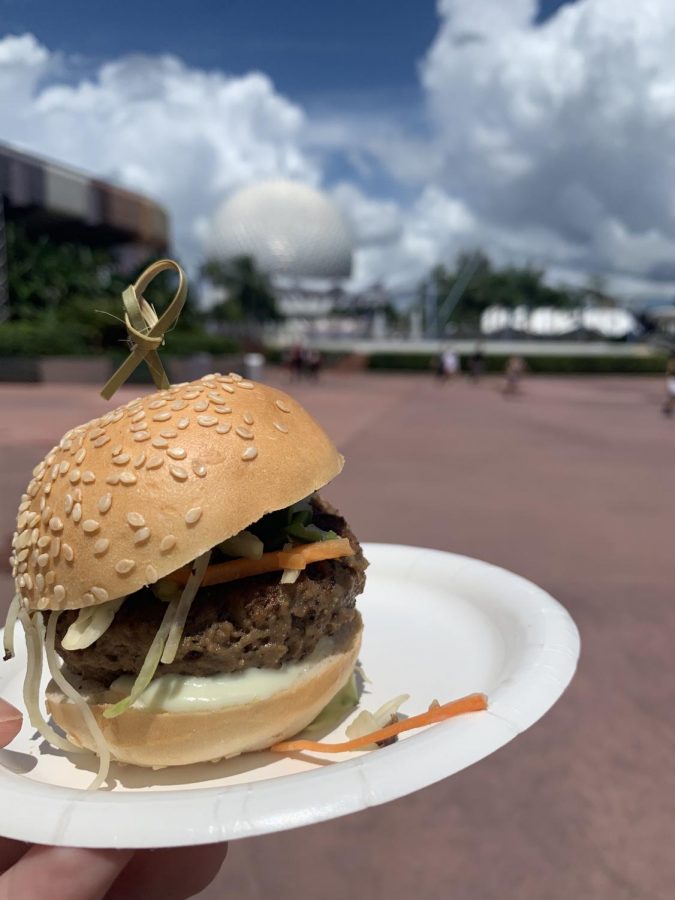Impossible made possible
photo by Charlotte Mansur
The Impossible slider is being served at Epcot’s International Food and Wine Festival through November 23rd at the Earth Eats kiosk.
Veggie burger-most people picture a lump of black beans and some quinoa smashed together in an attempt to create a sad version of a patty. Not many would picture a sizzling juicy medium-rare “burger” like the one Impossible Foods creates.Their Impossible burger is a meat alternative genetically modified to look, feel and taste just like meat. The burger has taken the world by storm and corporations like Burger King are taking advantage.
To test the quality of Impossible meat, a burger party was thrown where students shared the new Impossible Whopper now being sold at Burger King, and the group compared it to a regular whopper in taste and quality.
“When I first tried the burgers I couldn’t tell a difference. If I didn’t know it wasn’t a real burger, I would think it was real,” junior Faith Neidhart said.
Impossible meat is made up of just four main components. Textured soy and potato proteins blend together and create a meat-like consistency that provides the nutrients needed to substitute other proteins. Coconut and sunflower oils are used to create a sear and sizzle when meat is cooking and add some flavor.A fancy cellulose binder is used to create the juicy burger that meat eaters crave.
The most important element, however, is heme. While it may sound like something from a “Men and Black” movie, it is actually a common protein that every plant and animal needs to survive. The flavor that is typically associated as “meaty” is in fact the flavor of heme. Basically, heme is the foundation of the Impossible meat industry.
Many large corporations other than Burger King have jumped on the heme bandwagon. Epcot, for example, has an entire Impossible Foods-themed kiosk that is a part of the international Food and Wine festival. Even Katy Perry, who is a major investor in the company, wore a burger costume to the Met Gala to promote the product.
Despite all of its success, even plant-based burgers have their critics.
“You know, as someone that has eaten meat almost my entire life, and never deviated from that path, you can just tell that that one’s not meat. I can’t describe the taste but it just tastes cheap,” junior Alex Tao said.
In addition to comments about a lesser taste, many question the nutritional value of the product, claiming that its high sodium and calories revoke their “health food” brand. Chief financial officer of Impossible Foods David Lee has refuted these claims in many instances explaining that their purpose is not to compete with the benefits of greener food, but to compete with the red meat industry.
In comparison to red meat, the Impossible burger has 10-20 percent less calories, and no cholesterol. They also pride themselves in using healthier fats like coconut and sunflower oils.
Other companies such as Beyond Meat and LightLife have similar products on the market, but have failed to create a realistic looking burger that reaches the audience Impossible has gained through their partnership with Burger King and their twitter account.
Impossible foods has hinted through their social media that they plan to have pre packaged pattys available for sale in grocery stores by the end of this month to make Impossible burgers accessible for everyone.
Your donation will support the student journalists of Hagerty High School. We are an ad-free publication, and your contribution helps us publish six issues of the BluePrint and cover our annual website hosting costs. Thank you so much!












